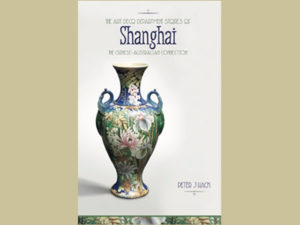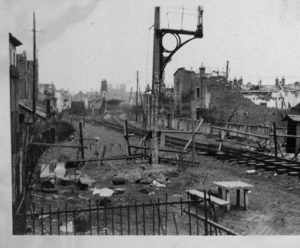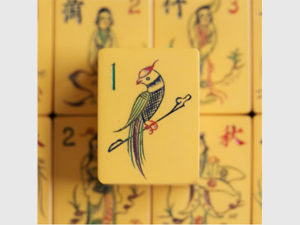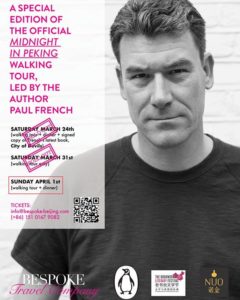All things old China - books, anecdotes, stories, podcasts, factoids & ramblings from the author Paul French
Posted: March 9th, 2018 | No Comments »
Today’s gang of old Shanghai, in association with That’s Shanghai, is the Broadway Mansions gang – basically a 24 hour high stakes card game that, due to the amount of money on the table needed heavy security from an opportunist thinking to get rich quick…. if nothing else these boys took the prize for best HQ!

Posted: March 9th, 2018 | No Comments »
The Art Deco Departments Stores of Shanghai
Saturday, 10th March 2018
10:00 am – 12:00 pm
RAS Library
RAS LIBRARY Lecture and Walk
Presenter and Author: Peter J. Hack

Please join us at the Royal Asiatic Society Library to hear Peter Hack’s slide presentation of his 2017 book The Art Deco Departments Stores of Shanghai (10.00am) followed by a walk on Nanjing Lu to see the departments stores discussed in his book (11.00am). The morning ends with an optional lunch nearby (location tbd).
Peter had a 33-year career in the Department of Education in Sydney before leaving the Public Service in May 2016. He now spends time researching modern Chinese history and the overseas Chinese in Australia. Peter is a life member of the Chinese Museum in Melbourne and the Chinese Australian Historical Society, and he is now also a member of the Royal Asiatic Society of China. He is a regular visitor to Shanghai and spoke at the World Congress on Art Deco in Shanghai in 2015.
This is a RAS Members only event and is limited to 10 people.
Dress Code: The RAS Library is located within a private club – please follow the club’s dress code: dressy casual (no sneakers, jeans, t-shirts, etc.)
Posted: March 8th, 2018 | No Comments »
Today’s gang of old Shanghai with That’s Shanghai – the Wiengarten brothers and the Red Rose Gang up on the Jukong Alley (Zhingxing Lu – seen here after being bombed by the Japanese)…click here for more

Posted: March 7th, 2018 | No Comments »
Tuesday, 13th March 2018
7:30 pm – 9:30 pm
RAS Library
A History of Mahjong
Speaker: Beth Epstein

During the session we will hear and discuss Beth Epstein’s presentation on “A History of Mahjongâ€
Chinese History Study Group meets monthly – generally the second Tuesday of each month September through June. Our members select and research topics of personal interest, make brief oral presentations, then engage in discussion with those attending the talk. Each month one or two members discuss their topics.
For a list of future topics and presenters, please contact convener Furkan Erdogan studygroup@royalasiaticsociety.org.cn
Posted: March 6th, 2018 | No Comments »
Today’s old Shanghai gang in my series with That’s Shanghai is the Burlington Hotel gang run by Old Bill Hawkins up on the Bubbling Well Road (Nanjing Xi Lu)….click here…

Posted: March 5th, 2018 | No Comments »
Bespoke Beijing (who organise the Midnight in Peking walking tour) have been blown away by the response to the tours I’m jouning in March – amazingly, and perhaps somewhat bizarrely, they sold out in a matter of days. As a result we’re going to do one more walking tour + dinner on Sunday April 1st! Click the link to buy tickets!

Posted: March 5th, 2018 | No Comments »
The original French Connection – Frenchtown Shanghai to Marseilles courtesy of the Union Corse…click here to see more

Posted: March 4th, 2018 | No Comments »
The 37427 gang run by “Fat” Tony Perpetuo was based out of the 37427 Casino on the Bubbling Well Road (Nanjing West Road – below). Fat Tony was Shanghai’s other Portuguese mob boss (see yesterday’s post on Jose Bothelo and the Silver Palace Gang for more Portuguese bad guys in old Shanghai – Jose in Frenchtown and Fat Tony in the Settlement)….








